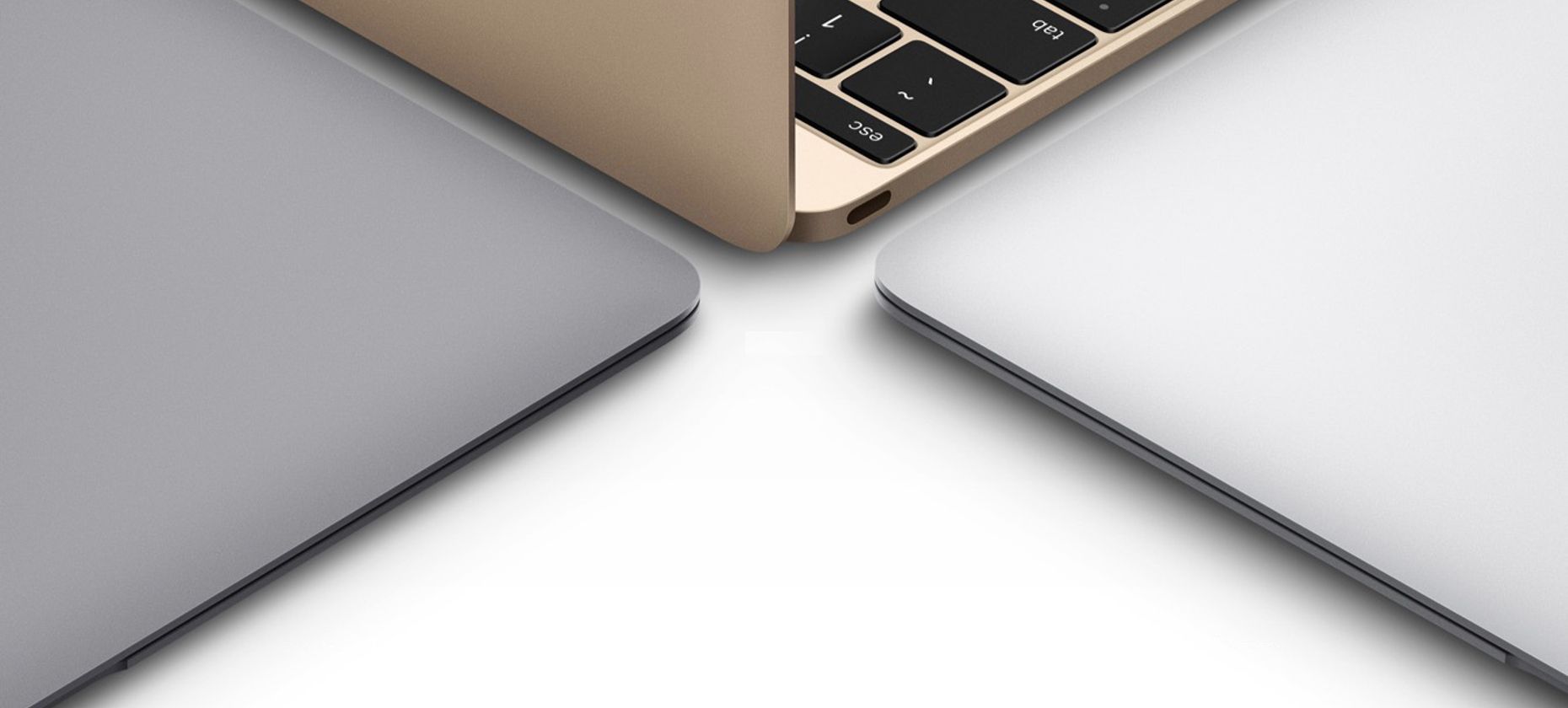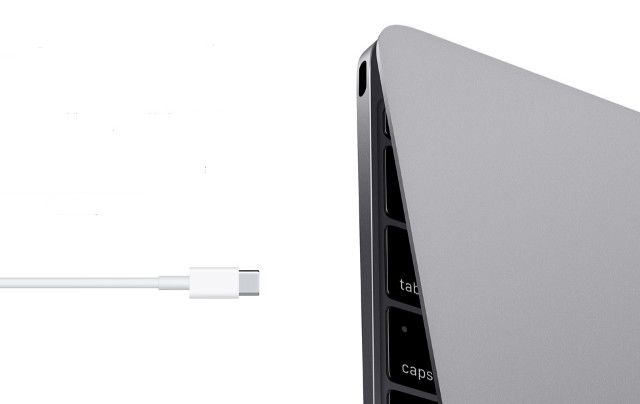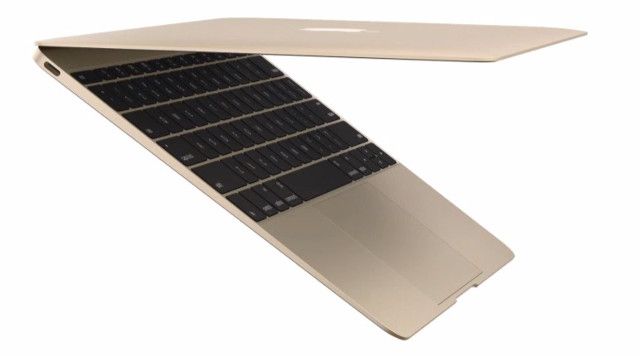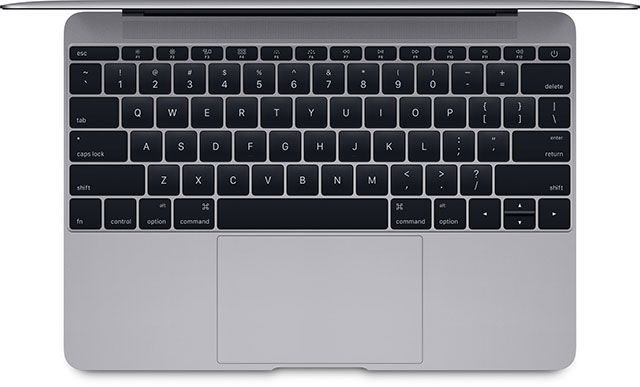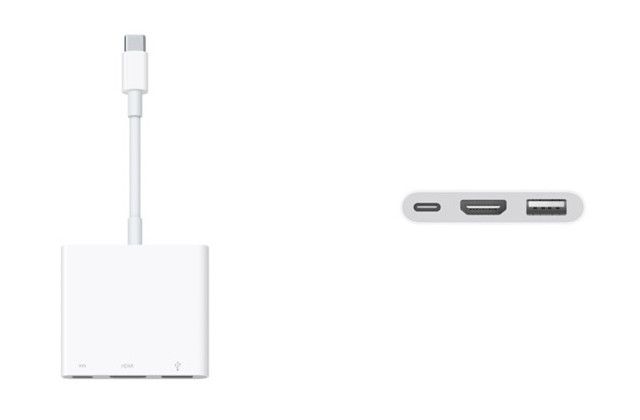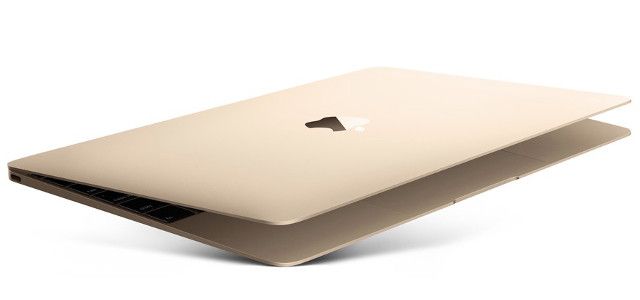Apple recently revealed the new MacBook, and it's a jaw-dropper. Available in silver, gold, and space gray, the new machine features a full-width keyboard, a modern 12" chassis, a new Force Touch trackpad and a glorious Retina screen while being lighter than an 11" MacBook Air.
But it also has only a single port. Was this a blunder? Or a sign of the future?
USB-C
Interestingly, the port that Apple chose to include on the MacBook is USB-C, the most recent iteration of the venerable connection technology. Before the new MacBook, Macs (and pretty much everything else) came with USB-A ports. These are the ones you're used to; rectangular, and a pain in the ass to figure out if they're right side up.
USB-C is reversible, a monumental step up from the directional ports of yesterday.
And it'll also bring an increase in performance: faster charging, faster data transfer, and bi-directional power, meaning that the same port that's used to charge your MacBook can also be used to charge other things from your MacBook battery. It's also smaller than previous USB connectors.
But still, using it for a single port? What was Apple thinking?
A Well-Planned Move
It turns out that Apple had done a lot of thinking about this particular change to the MacBook lineup. And, in contrast to many of their previous hardware changes (the Lightning cable, for example), this is a move away from proprietary technology, a very rare thing for Apple.
Moving away from MagSafe and Lightning technology is a great thing for consumers, as more developers will be able to develop technologies that will work with Apple products without worrying about using Apple-specific gear.
So USB-C is a good idea, both for Apple and consumers. But what about dropping all of the other ports? Surely that can't be good for anyone? Well, the answer is slightly complicated. First, we'll look at Apple. What does Apple want you to connect your MacBook to? An iPhone, an iPad, and Apple TV, all things that support wireless communication, either via Wi-Fi, Bluetooth, or AirPlay.
Their peripherals are largely the same — Apple's wireless keyboards and mice work seamlessly with Apple computers, and look good doing it, too. As technology improves, Apple displays will likely support AirPlay soon, further obviating the need for a cable.
Whether or not you think the move to a single USB port is good for consumers depends largely on what you do with your computer. The MacBook looks a lot more like an iteration of the Air than the Pro, meaning that its highest priority is portability and battery life. It's listed as an impressively scant 2.03 lbs., lighter than the 11" Air.
So what will users be losing? Professional photographers and designers are probably using desktop Macs or MacBook Pros, not Airs, for the increased processing power, memory, and storage.
SD cards are primarily used for cameras—and casual photographers are increasingly using their phones, which means iCloud or Dropbox is even easier than an SD card port. Ethernet cables have almost completely disappeared over the past few years. HDMI has been replaced by AirPlay and streaming sticks. Thunderbolt is cool, but not that many people used it in the first place.
In fact, the only time that I use both USB ports on my MacBook Air is when I'm charging something, which could just as easily be accomplished from a wall outlet in 90% of cases.
Suddenly, a single-port laptop doesn't sound so crazy.
A Potentially Difficult Transition
That being said, there are going to be plenty of difficulties for users of the new MacBook. First of all, USB-C isn't a very common technology yet — though Apple's adoption of it is sure to catapult it to the top of most manufacturers' priority lists.
Until then, everyone will need an adapter; Apple sells one that lets you plug in a USB-C cable, a standard USB cable, and HDMI into the port at once, which significantly increases the flexibility of the port. It's expensive, at $80, and still only gives you a single standard USB port, though other adapters will become more common.
Another potential difficulty is found in the battery life of the MacBook. While a 13" MacBook Air is rated as up to 12 hours of wireless web browsing, the MacBook is only estimated at nine hours. And while that's plenty of time, you can be sure that if you have two or three Bluetooth or AirPlay devices connected to your computer, that's going to drain the battery fast.
This means you'll want it plugged in most of the time, which occupies the port. This could cause problems for the road warriors it seems targeted at.
The Future
Apple doesn't make changes this big to its products without a lot of planning and foresight, and the examples that I've set out above make it fairly clear that the future lies in laptops with fewer ports. But still, a single port?
The new Chromebook Pixel incorporates USB-C, but it has two of those ports, as well as two standard USB ports, and an SD card slot, though it doesn't have the svelte lines of the MacBook.
All in all, it's a safe bet that we'll be seeing a steady decrease in the number of ports on laptops. Though they won't be completely going away anytime soon—you can still get a MacBook Pro, which weighs in at 3.5 lbs (1.6 KG) for the Retina version, and have all the ports you want. This is likely what many people will opt for in the near future, especially if they use a lot of peripherals.
But don't underestimate the trend-creating power of a new MacBook — the fact that Apple is committing itself 100% to USB-C and wireless technologies could very well be an industry driver to this configuration within the next few years.
What do you think of the new MacBook? Will you be upgrading to it anytime soon? How do you feel about being limited to a single port? Share your thoughts below!

